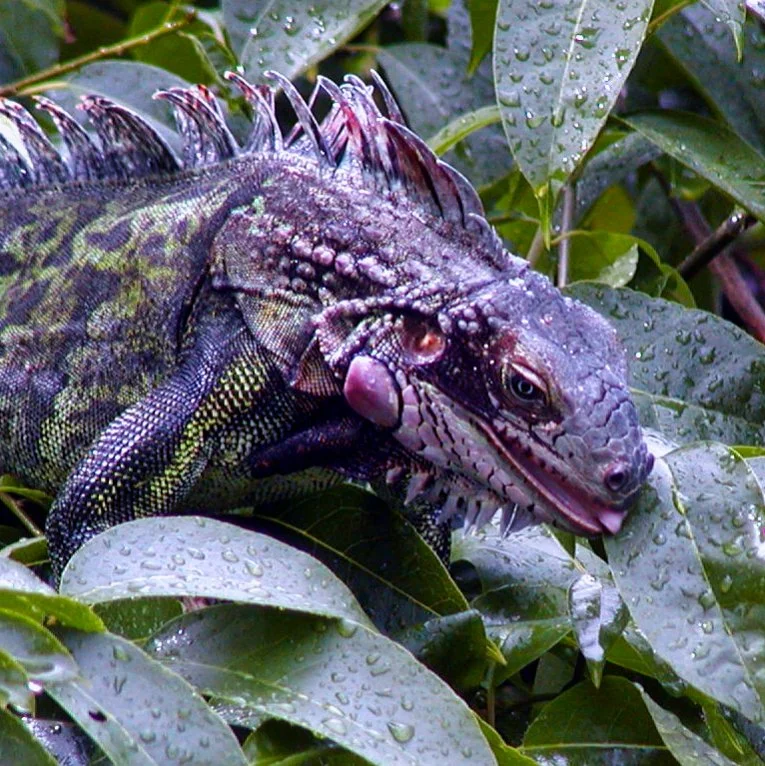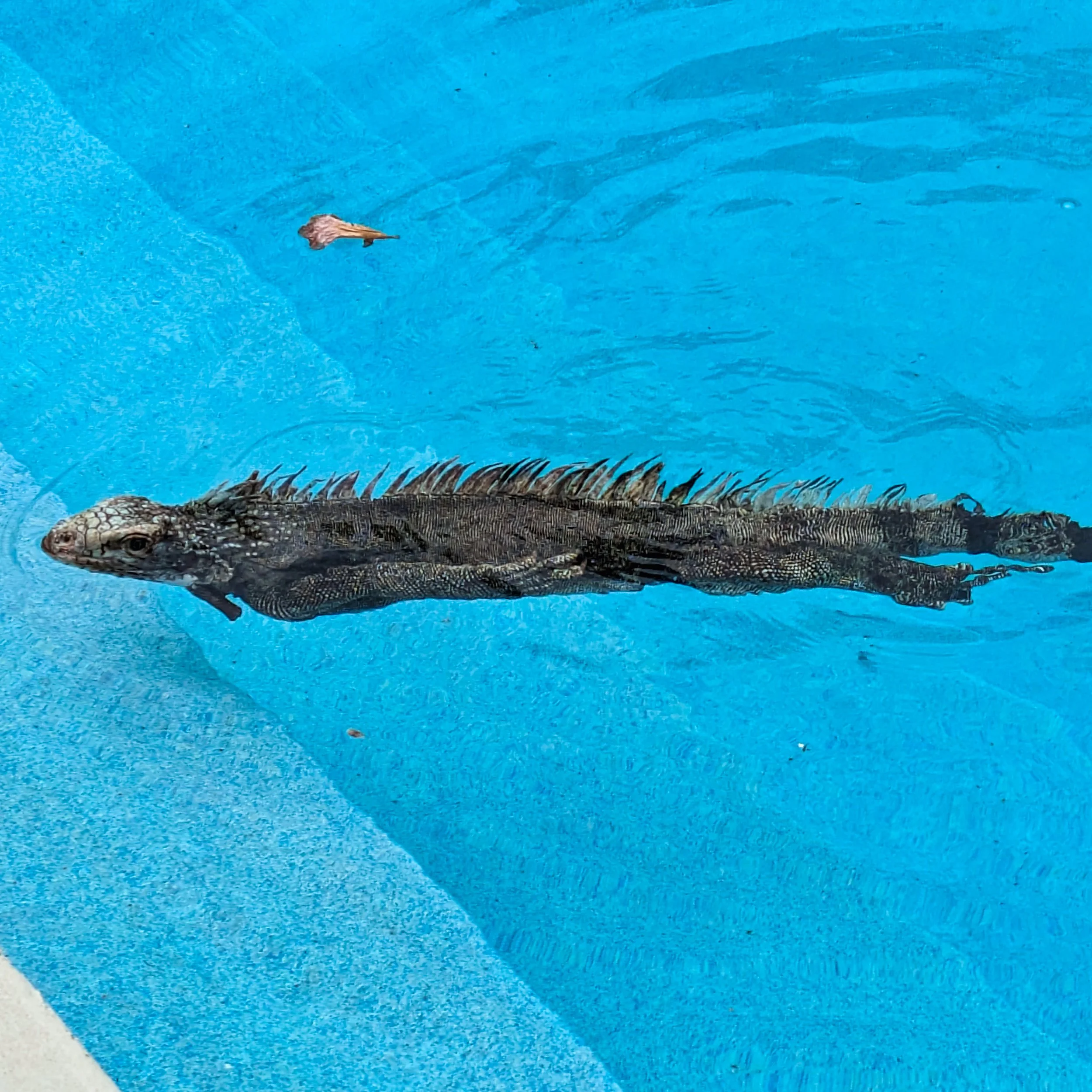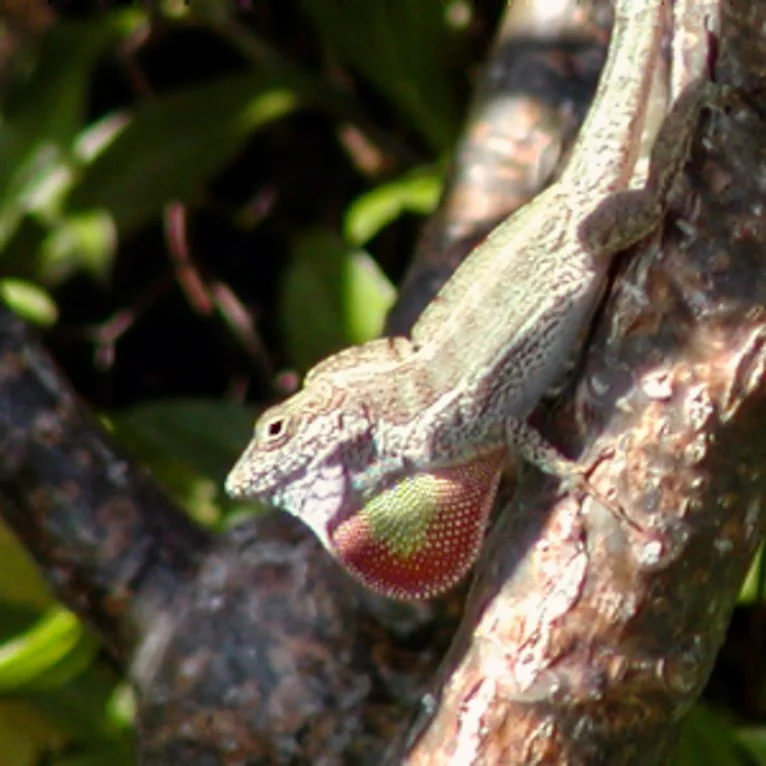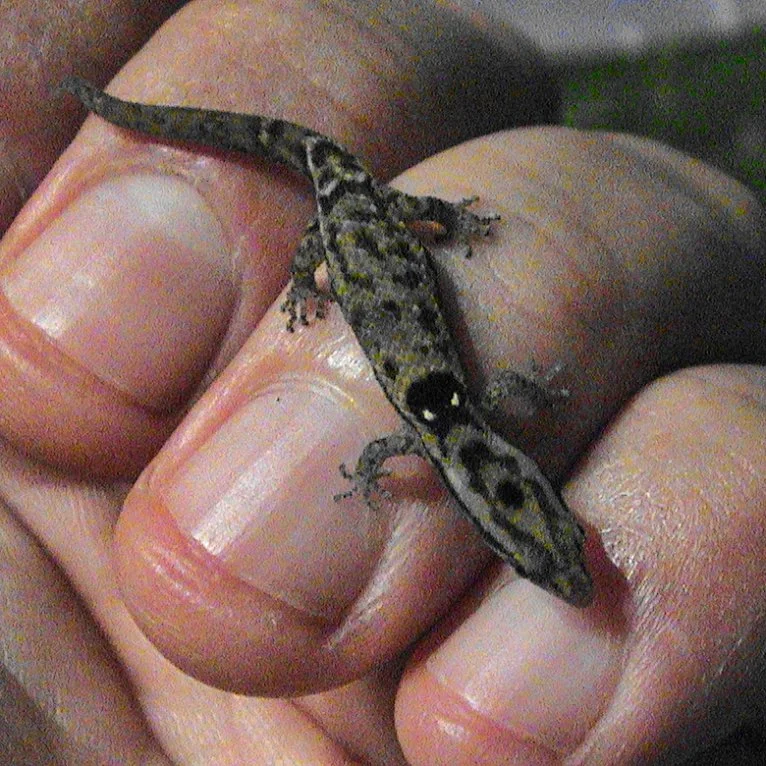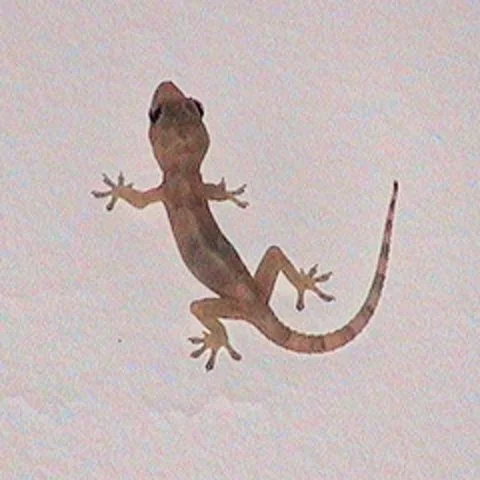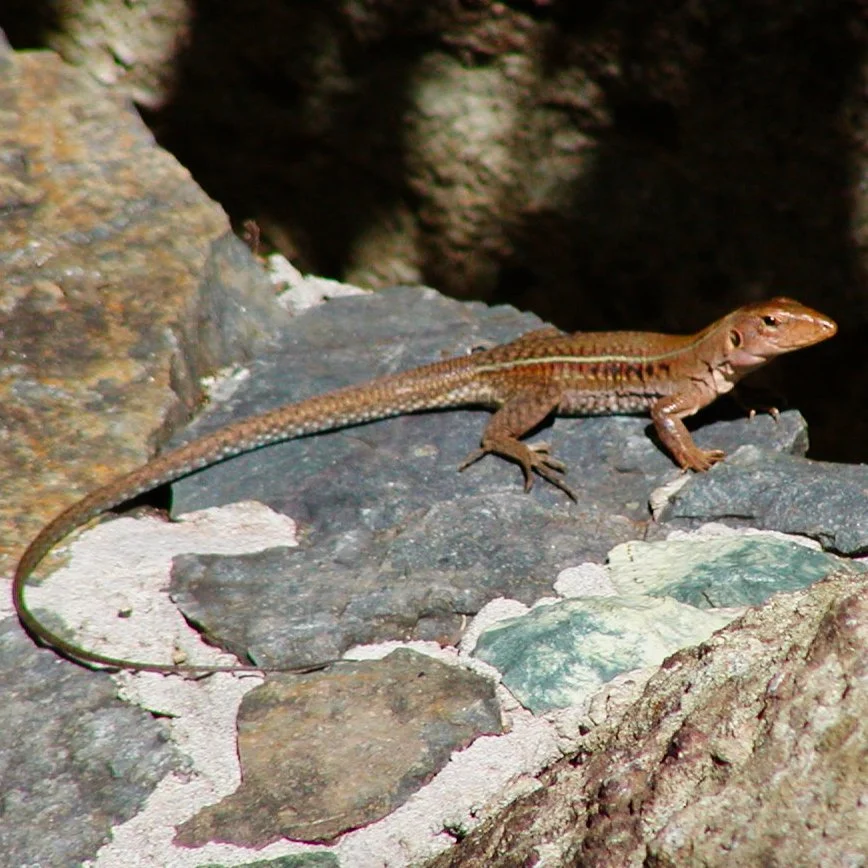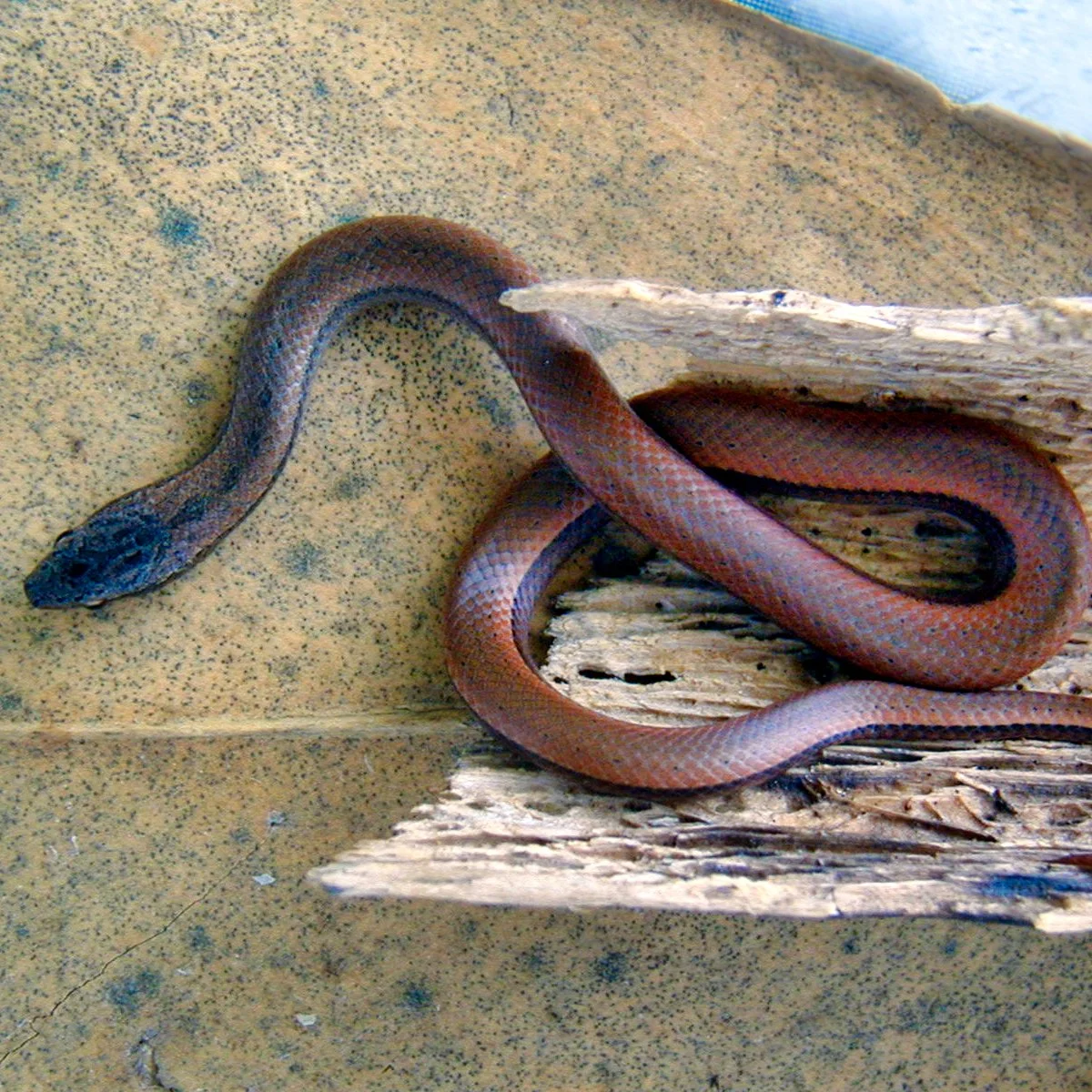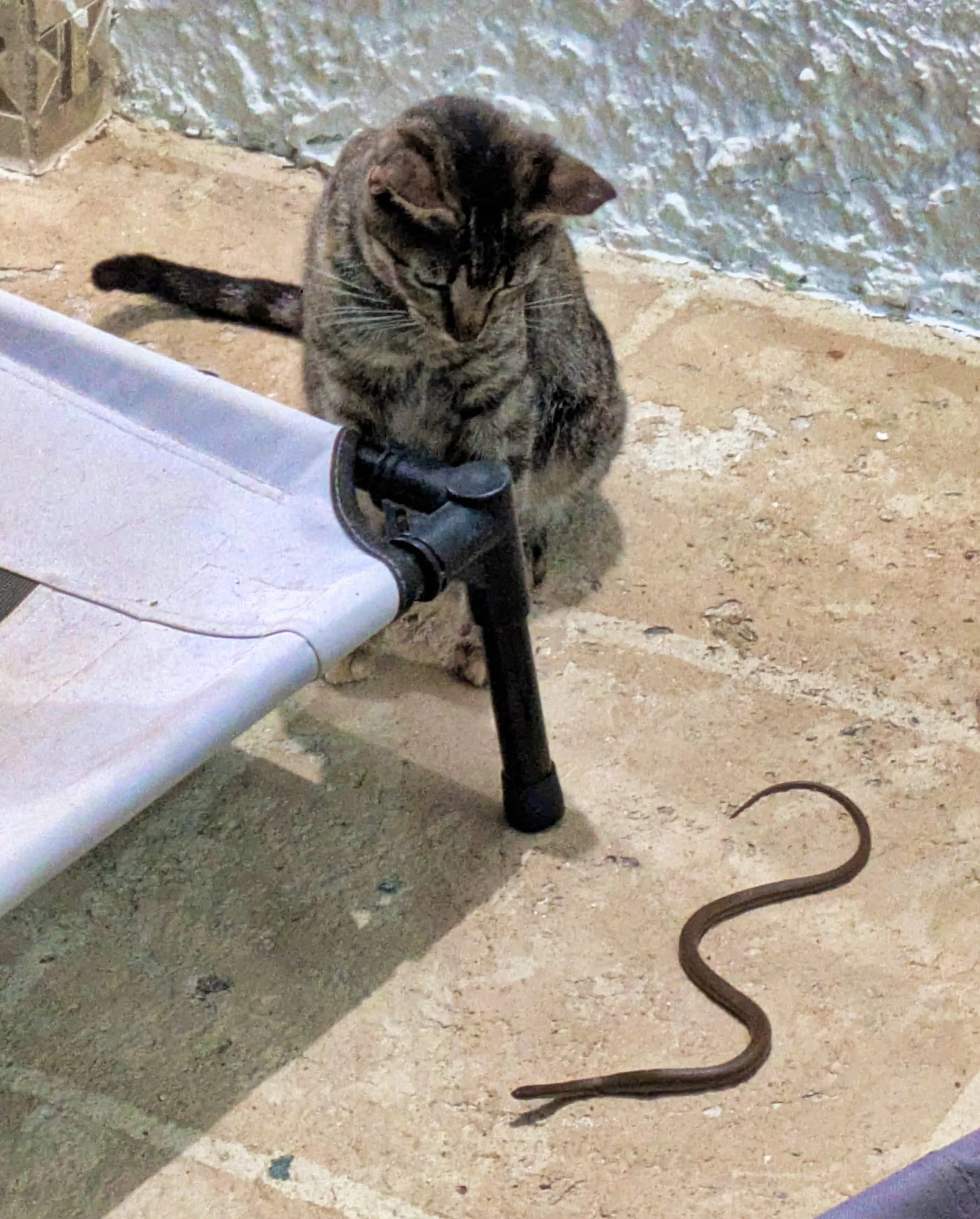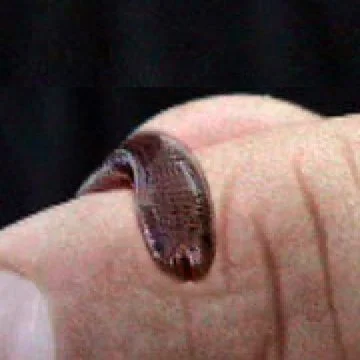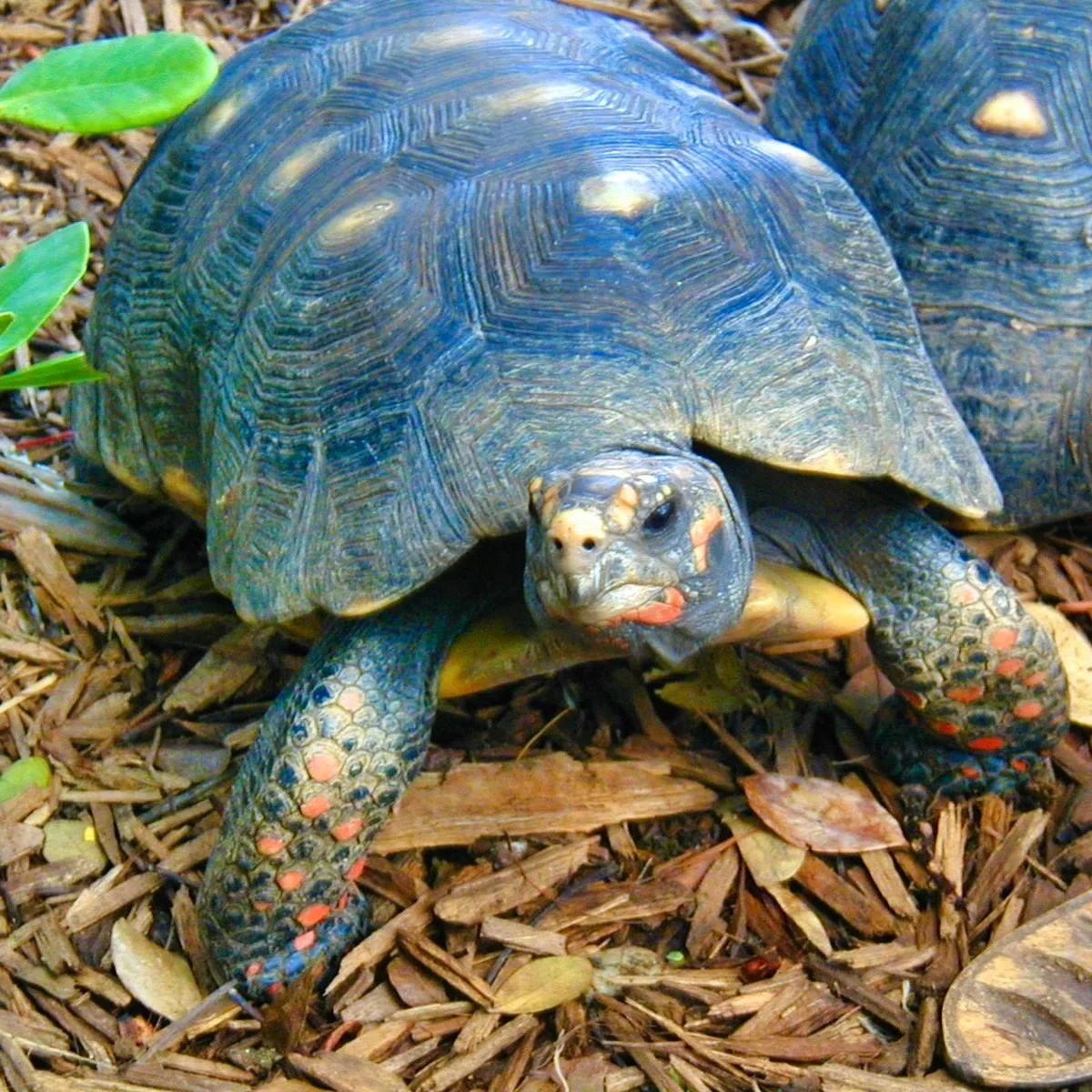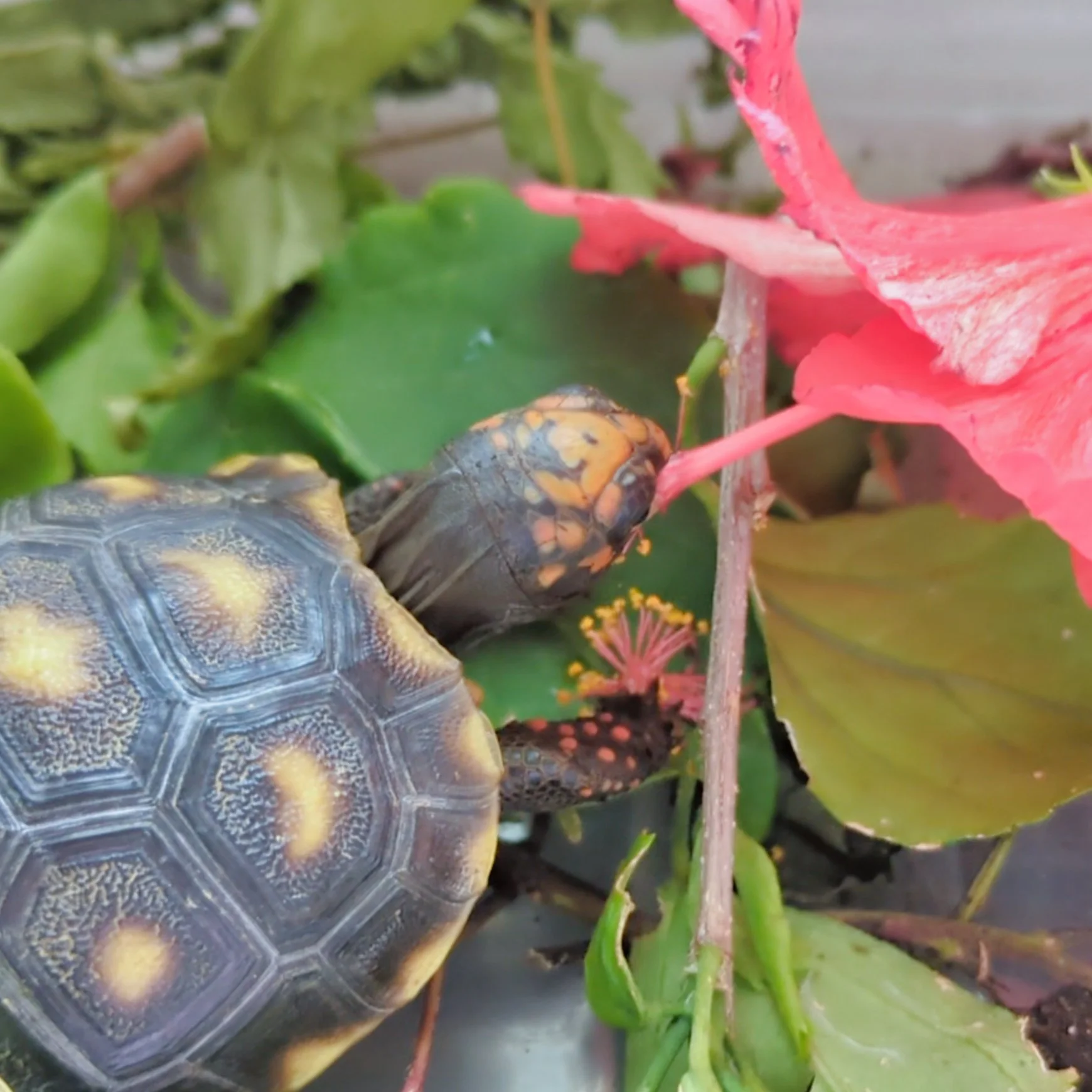Green iguana licking water droplets from a leaf after a rain shower
Green Iguana (Iguana iguana)
At over four feet from the end of the nose to the tip of the tail, the green iguana is the largest lizard in the Virgin Islands. They are vegetarians that typically graze on leaves and flowers. However, they can include a wide range of foods in their diet, especially as juveniles.
They spend much of their time in trees, but can also be frequently seen on the ground in a variety of environments.
Green iguana in swimming pool
Photo: S. Smollett
It is believed that green iguanas were brought from South America by indigenous people to be used as food. Today, most Virgin Islanders would balk at iguana on the dinner menu.
Peaceful and non-confrontational by nature, iguanas can be quite formidable when threatened. They are capable of delivering a painful bite or striking with a whip-like motion of their roughened tails. Iguanas can often be closely approached, especially at some hotels and resorts. However, caution and common sense should be used. Getting smacked by a large adult iguana’s tail is not an experience many would want to repeat.
Anoles (Anolis spp.)
Small relatives of the green iguana, anoles are perhaps the most commonly observed reptile in the Virgin Islands. Several species are found throughout the islands. These lizards eat insects and are typically territorial. They can often be found in the same locations from day to day, sometimes even within peoples’ homes.
Grass anole (A. pulchellus) with dorsal crest
Photo: S. Smollet
Anoles signal to each other in many ways. Two of the most dramatic are the development of crests on the back and tail and the extension of the dewlap (a colorful flap of skin beneath the chin). Typically, only male anoles develop crests and are the most likely to be seen extending their dewlaps.
Crested anole (A. cristatellus) extending dewlap
Anoles use these displays to impress members of the opposite sex and to intimidate intruders in the their territories. It is not uncommon for anoles to extend their dewlaps and vigorously bob their heads at humans!
Cotton Ginner (Sphaerodactylus macrolepis)
Cotton Ginners are small geckos that can be found hunting insects in leaf litter and under debris. They are one of the smallest lizard species in the world. They are also known as dwarf geckos.
Although they are very abundant in the Virgin Islands and active during the day, they are not commonly seen due to their small size (one to two inches) and secretive ways.
Unlike other lizards, geckos do not have eyelids. Like snakes, the eyes are protected by clear scales, which the gecko licks to clean.
Woodslave (Hemidactylus mabouia)
Originally from Africa, it is believed that woodslaves came to the Virgin Islands by traveling on ships that carried slaves.
These geckos are experts at catching insects and can frequently be found crawling on walls near lights at night and eating the insects that the lights attract.
Woodslaves are able to cling to smooth surfaces by having scales on their feet which are edged with tiny hooks. These hooks grasp the smallest irregularities.
The females lay small round eggs with hard white shells that are often found behind furniture and books or in other dark corners around the house.
Ground Lizard (Ameiva exsul)
Ground lizards are typically active during the hottest times of day. They are most often found in open areas in bright sunlight near man-made structures.
The eat a variety of foods such as insects, small frogs and lizards, carrion and fruits. They can reach a total length of about one to two feet.
Ground snake (Magliophi exiguus)
Like all species of snakes in the Virgin Islands, the ground snake is non-venomous and harmless to humans. These snakes are especially tame and rarely bite, even when caught by people or house cats. They are also know as the Virgin Islands miniracer.
Cat watching a ground snake
Photo: S. Smollett
Ground snakes grow to over a foot in length and eat frogs and small lizards, as well as their eggs. Females lay 6-18 eggs in protected areas such as loose soil beneath logs.
Blind Snake (Typhlops richardii)
Also known as worm snakes, blind snakes are secretive Virgin Islands residents. They resemble large worms 5-10 inches in length. These harmless snakes spend most of their lives underground.
Their name can be misleading, for although their eyes are very small, the are quite well developed. Their teeth are greatly reduced and they feed on insects such as ants and termites. A blind snake feeds by crushing an insect, releasing the juices into the mouth, then discarding the solid part of the meal.
Although they can be common in moist areas, these snakes are rarely observed due to their choice of habitat, relatively small size, and nondescript appearance.
Red-Footed Tortoise (Geochelone carbonaria)
Also known as morocoy, the red-footed tortoise is the only non-marine turtle native to the Virgin Islands. It occurs throughout much of tropical South America as well as many islands in the Lesser Antilles.
Juveniles are only two inches long, while adults can reach lengths of up to 18 inches. Their diet is broad, ranging from leaves and fruit to rotten meat and fish.
Juvenile red-footed tortoise eating a hibiscus flower
Photo: S. Smollett
It is believed that the tortoise originated in South America and was spread throughout the Caribbean by indigenous people who kept tortoises as pets and for food.
